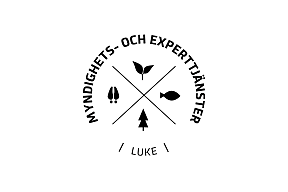Improving the science basis of the fisheries management of the Gulf of Bothnia herring

The main objective of this work is to strengthen the scientific knowledge of the ecology and dynamics of the Gulf of Bothnia herring under the pressures from climate change and human activities, to support the scientific basis of the fisheries management.
Herring and sprat fisheries are the most important fisheries in the Baltic Sea both in terms of landing weight and economic value. The Gulf of Bothnia herring constitutes a culturally and economically important fishery in the northern Baltic Sea. The herring stock has undergone major changes in growth, weight-at-age, and maturity-at-age, but the causes of these changes are poorly understood. Possible causes of the changes include top-down and bottom-up effects through the food web and fishery-induced evolution of the demographic parameters favouring slower growth and earlier maturation, but more understanding on the mechanisms behind the changes is needed to manage the fishery towards a healthier stock structure.
Furthermore, the stock assessment has been uncertain for a long time despite the yearly, extensive acoustic & trawl surveys and catch sampling. The use of the Stock Synthesis 3 (SS3) model since 2021 has improved the stability and reduced the uncertainties of the assessments, but there are still major knowledge gaps in relation to the abundance estimates of young age classes, as well as reasons behind, and the possibly cascading effects of, the changes in growth and maturity. Improvements are needed in the stock size assessment to provide solid scientific basis for the fisheries advice.
This project will improve the scientific basis of the Gulf of Bothnia stock assessment by three main scientific advances:
1. Improving the accuracy of the acoustic abundance index used for the assessment of the stock size. This part of the work improves the computation of the stock size, obtained through the acoustic index provided by the BIAS survey, by assessing the effect of the depth and intensity of thermocline and halocline on the detectability of the juvenile individuals, and incorporating the corresponding information into the calculations.
2. Improving the scientific knowledge related to the factors behind the changes of growth, weight- and size-at-age,maturity of the stock, and to enable better management that contributes to the conservation and profitable fishery of the stock.
3. Improving the scientific knowledge related to the temporal variability of the spatial distribution of herring of different age and size groups and identifying potential spawning grounds, and stock structure, to enable better management that contributes to the conservation and profitable fishery of the stock.
Funded by the European Union. Views and opinions expressed are however those of the author(s) only and do not necessarily reflect those of the European Union or the European Maritime, Fisheries and Aquaculture Fund. Neither the European Union nor the granting authority can be held responsible for them.

